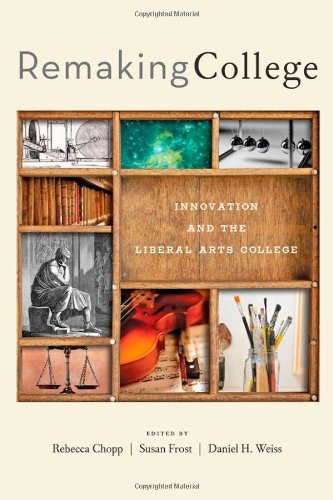Major grant supports new innovation network
Picture theater students being able to digitally track how an audience member’s eyes move across the stage during a performance and using that information to improve a show’s design.
Imagine updated and expanded spaces for do-it-yourself projects, where students from a variety of disciplines can come together and experiment with tools, materials, media and technologies to build something original, solve problems and inspire others.
Envision additional courses that expand on Wheaton’s Connections curriculum, linking up seemingly disparate fields like science and design in exciting ways, supported by the latest technological advances.
These ideas, and other possibilities, will become reality over the next four years, thanks to a $500,000 grant awarded to Wheaton by the Sherman Fairchild Foundation. The funding will be used to promote new approaches to teaching and learning in the arts and new media, and will support the collaborative efforts of Wheaton faculty and staff through the newly established InterMedia Arts Group Innovation Network (IMAGINE).
“This important grant recognizes the extraordinary collaborations that are already happening on campus, some of which flow directly from the Connections curriculum and others from the spirit of creative colleagueship that Connections inspires,” Provost Linda Eisenmann said. “We’ve established an environment where faculty and staff already want to reach out across disciplines, and to bring students along with them.”
The new funding will be used to integrate technology into the arts and arts into technology, according to Josh Stenger, Hannah Goldberg Professor of Teaching Innovation. He will serve as a project manager for the grant’s first year, along with Touba Ghadessi, associate professor of art history and co-founder of the Wheaton Institute for the Interdisciplinary Humanities.
“IMAGINE seeks to dispel two stubborn and onerous fictions: that art is not rigorous or technical, and that science is not creative,” said Stenger, who also coordinates film and new media studies. “As is common in the arts and sciences, IMAGINE emphasizes project-based learning. It is a hands-on, minds-on enterprise that supports and encourages learning by doing both in connection with and independent of specific courses.”
The grant money will support development of new courses and the transformation of existing courses that integrate the arts and technology—about three each year over the next four years. Funds will also be used to establish student-faculty special-interest groups and to purchase new technology and equipment such as a laser cutter, industrial 3-D printer, motion-capture camera equipment, mobile eye-tracking equipment and a programmable loom.
Assistant Professor of Filmmaking Patrick Johnson hopes to draw on the resources available through IMAGINE this fall when he teaches the First-Year Seminar “Mobile Storytelling.”
“With the IMAGINE network in place, I will be able to hold class sessions in locations throughout campus, including in FiberSpace, the WCCS recording studio, the Wheaton Autonomous Learning Laboratory [WHALE lab], the experimental theatre and the slide library, and present location-based storytelling challenges to the students,” Johnson said. “It’s a great opportunity to introduce these different spaces, technologies and creative potential to members of the freshman class.”
Associate Professor of Computer Science Tom Armstrong, founder of the WHALE lab and FiberSpace, said he is looking forward to bringing the two spaces together in one room with new equipment. The new space will be called Making@Wheaton.
“Wheaton strongly believes in the power and value of a connected, interdisciplinary curriculum,” Armstrong said. “This grant will allow us to combine and expand the WHALE lab and FiberSpace, making new opportunities for computational thinking available to all interested Wheaton students, staff and faculty.”
These and other projects will be introduced to Wheaton in the coming four years, and professors are excited to see how students respond.
As Johnson put it: “The IMAGINE network is an amazing sandbox. But like a sandbox, it’s not the sand or the box that’s really important, it’s the castles that the students make.”

